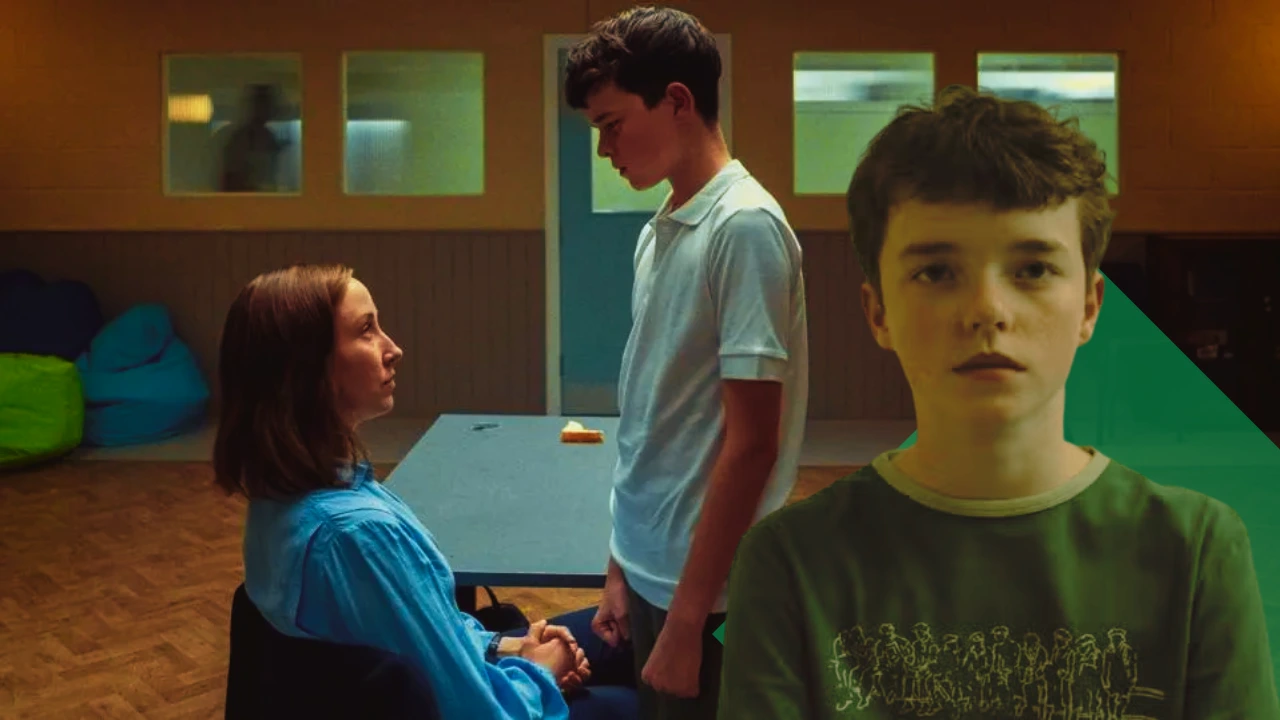Netflix has once again delivered a gripping psychological drama with Adolescence. Released on March 13, this four-episode miniseries has left audiences reeling with its raw portrayal of teen angst, psychological trauma, bullying, and violence. Garnering a 100% Rotten Tomatoes score, the show takes viewers deep into the mind of a troubled youth and the devastating fallout of his actions.
With its one-take filming style, Adolescence demands complete focus, immersing audiences in an unfiltered, intense narrative. As the chilling final moments unfold, many are left pondering the events that led to such a tragic climax. Let’s break down Adolescence’s ending and the critical questions it raises.
Why Did Jamie Kill Katie in Adolescence?
Jamie’s shocking act stems from a complex mix of psychological, social, and emotional influences. The series provides a deep dive into his unraveling mental state, exposing the profound effects of low self-esteem, bullying, and toxic masculinity.
- Jamie’s Struggle with Self-Worth
Grappling with severe self-doubt, Jamie faced relentless peer rejection and public humiliation. His fragile confidence shattered under the weight of bullying and social ridicule, leaving him vulnerable to extreme emotional distress. Research suggests that adolescents experiencing social isolation and low self-esteem are more susceptible to aggression, reinforcing Jamie’s descent into darkness. - The Role of Social Media and Cyberbullying
In today’s hyperconnected world, social validation can be everything. Jamie’s public rejection by Katie escalated into viral humiliation, with mocking emojis and online shaming fueling his despair. Studies show that cyberbullying victims often struggle with emotional regulation, increasing the likelihood of violent outbursts. - Toxic Masculinity’s Influence
Adolescence sheds light on toxic masculinity’s role in shaping young men’s perceptions of strength and identity. Feeling emasculated by Katie’s rejection, Jamie’s anger festered, leading him to believe that violence was the only way to reclaim control. The show underscores how deep-seated societal pressures and ingrained misogyny can dangerously influence impressionable minds.
The Aftermath: Jamie’s Family and Their Struggle
Following the tragedy, Jamie’s family—his parents Eddie (Stephen Graham) and Manda (Christine Tremarco), and his older sister Lisa (Amelie Pease)—grapple with grief, public outrage, and personal guilt.
Public Backlash and Isolation
The series highlights the collateral damage experienced by the family of a convicted murderer. Jamie’s parents and sister become targets of harassment, social exile, and intense scrutiny. The realistic depiction of their internal conflicts and external struggles mirrors real-life cases where families of perpetrators face similar ostracization.
Stay or Leave?
Lisa argues that relocating won’t erase their painful past. Instead, the family decides to remain in their hometown, hoping that over time, public resentment will diminish. Their choice is also driven by a need to stay connected to Jamie, acknowledging that despite his crime, he is still their son and brother.
Adolescence: A Psychological Drama That Sparks Debate
More than just a crime drama, Adolescence delves into adolescent psychology, mental health, and societal expectations. It challenges viewers to examine how young minds are shaped by their surroundings and the lasting consequences of bullying and rejection.
For those who haven’t watched, Adolescence is now streaming on Netflix, offering an emotionally intense and thought-provoking experience.
About the Author
With expertise in film analysis, psychology, and social issues, I explore the intersection of cinema and real-world mental health challenges. My work has been featured on multiple platforms, dissecting how media portrays human psychology.
FAQs
1. Is Adolescence based on real events?
No, Adolescence is entirely fictional, though it addresses real-world issues like bullying, toxic masculinity, and mental health struggles.
2. Why is Adolescence receiving so much praise?
With its raw storytelling, powerful performances, and immersive one-take cinematography, Adolescence has been hailed as a groundbreaking psychological drama.
3. What makes the one-take filming style significant?
This continuous-shot approach intensifies the viewer’s immersion, creating a real-time effect that heightens emotional engagement.
4. How does Adolescence explore toxic masculinity?
The series critiques the effects of societal expectations on young men, exposing how misogyny and emotional repression can lead to tragic consequences.
5. Where can I stream Adolescence?
You can watch Adolescence exclusively on Netflix.
6. Are there similar movies or shows that tackle these themes?
Yes. Films like We Need to Talk About Kevin, Joker, and Thirteen Reasons Why also explore mental health, social rejection, and adolescent violence.
